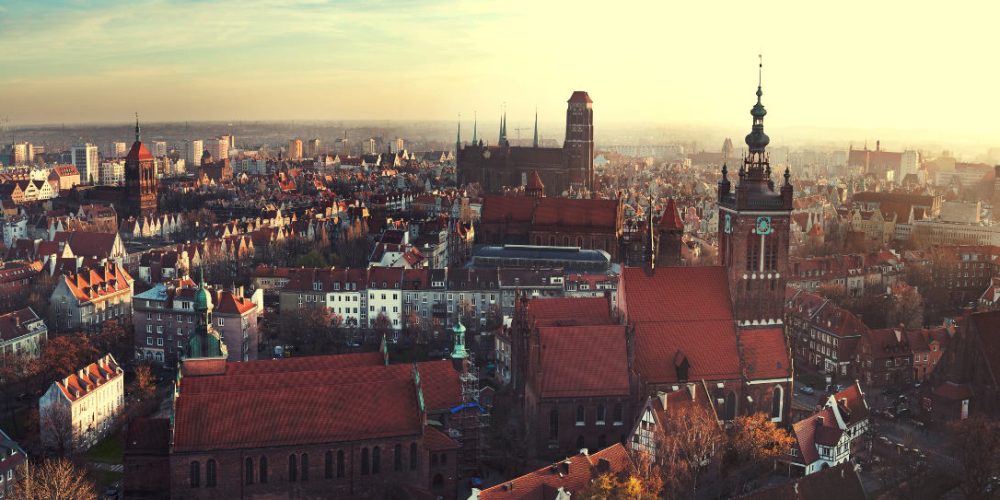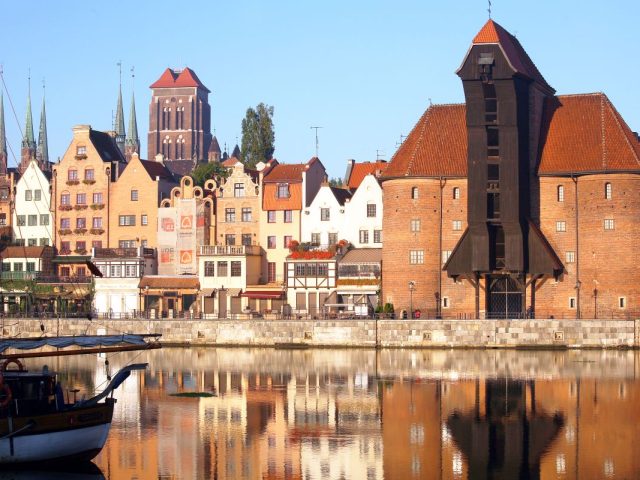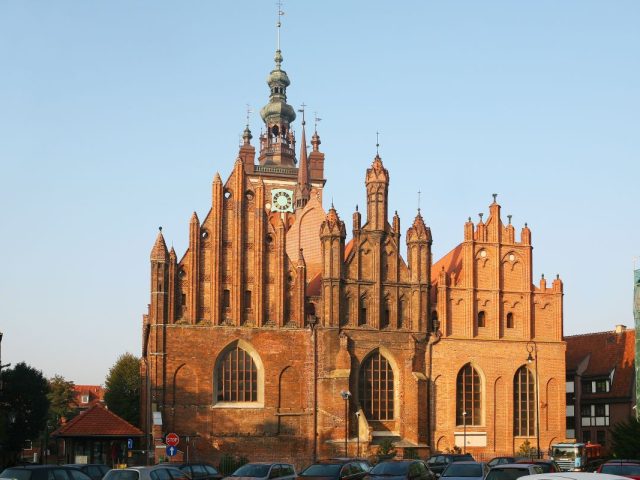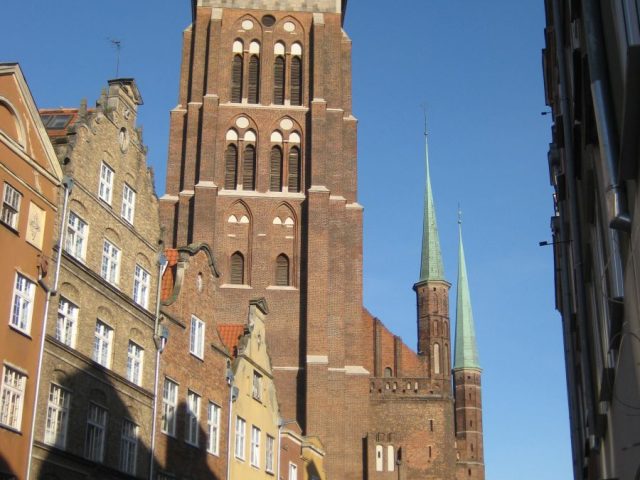The former Hanseatic City of Gdańsk used to be the most important Baltic Sea port in the historical region of Pomerilia. Its history goes back more than a thousand years. Around 1224, the merchant settlement was granted city rights by the Pomeranian Duke Swantopolk II. It quickly developed into an important trade location, making it the object of desire of numerous territorial lords over the centuries. During its eventful history, the city reached its greatest economic boom in Hanseatic times during the 14th and 15th centuries, a period of affluence evidenced by its impressive Brick Gothic buildings like St. Mary’s Church.
During the Gothic period, numerous other brick churches and monasteries were built in Gdansk: the Parish Church of St. Catherine, the Dominican Church of St. Nicholas’, the Franciscan Church of Holy Trinity with its beautiful crown-like gables, the Church of St. John, which was most affected during the Second World War, and many others. They all have a spacious hall architecture. Inside, you will see beautiful forms of vaulting (reticulated, stellar and cellular), pointed-arched portals, decorative elements made of ashlar and noteworthy altars and choir stalls.










